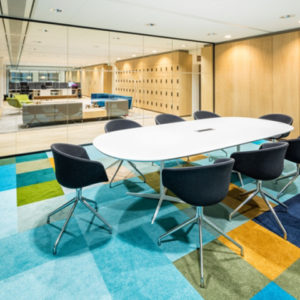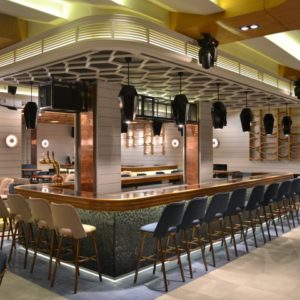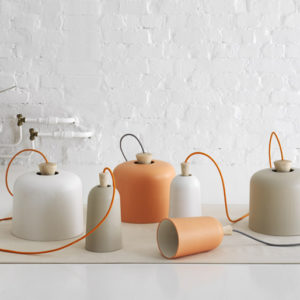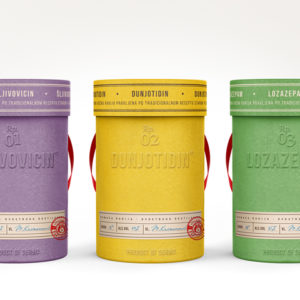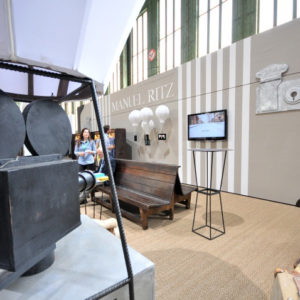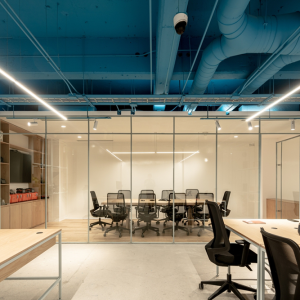
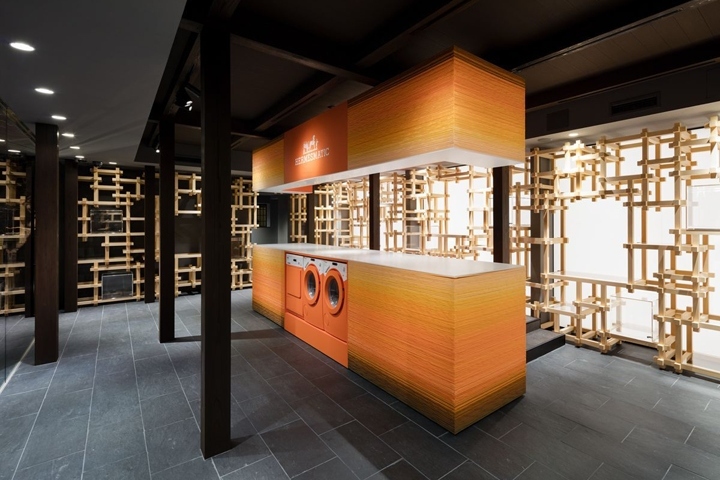

This was an architectural project for the design of Daimaru Kyoto, Gion Machiya, as a part of Daimaru’s 300th anniversary for its foundation. We also conducted the interior design of <Hermès Gion-mise> as the first shop opened in this traditional Japanese house. The site is located along Hanamikoji Street, which goes through the center of Gion area in Kyoto city with traditional townscape. We renovated and transformed a town house previously used as a tea house/ residence into the store. Since the area is designated as the Historical Landscape Preservation and Improvement District, the building’s exterior design visible from the street remains with its original condition.
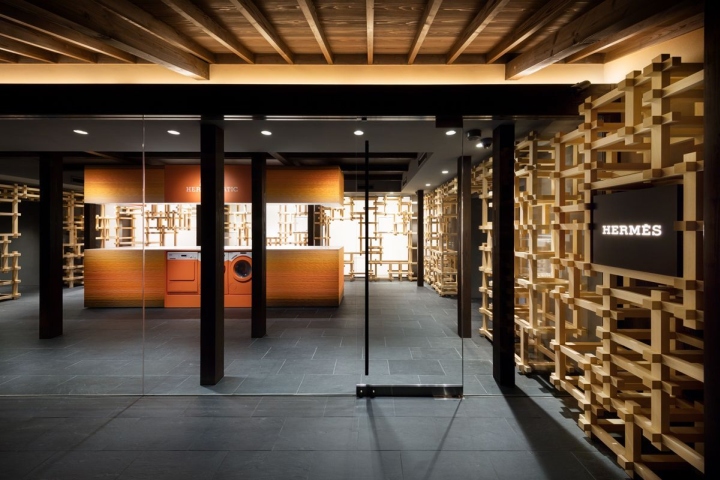
The former building used as a residence was composed of partitioned small rooms, narrow hallways and several spot gardens; therefore, it was required to link those small spaces to make them function as a store, while maintaining the framework of the building. Then, we connected those separately allocated spot gardens to be reconfigured into an exterior “alley”, which leads visitors to the shop directly from the storefront street, to the 1st floor shop space located along this alley. Register area and fitting room area are gathered at the west side of the building, while an elevator and a staircase are newly built at the east side.
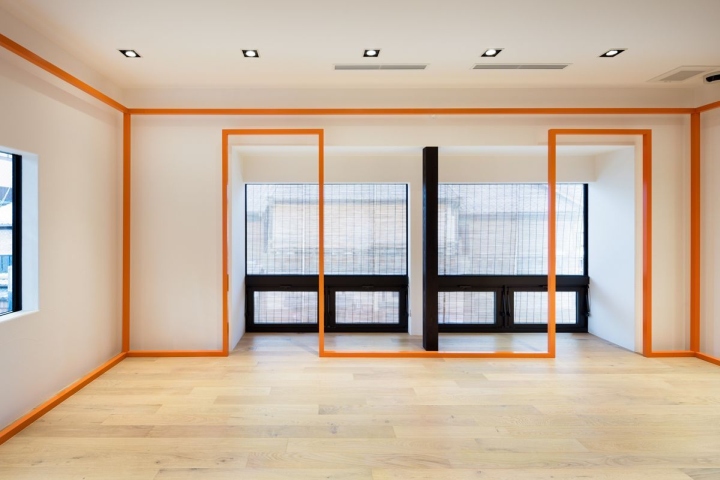
This enabled the central area for product sales to become a single room without any partition―a space with a feel of continuity to the “alley” produced by a large glass surface and eaves. In the sales area on the 1st floor, a Japanese wood joinery technique called “kigumi”, which is often found in traditional Japanese buildings, is utilized for furniture and fixture, and it is placed along the wall surfaces of the space. “Kigumi” is the technique to apply mortises and tenons on wood pieces to fit them together without using any nail or adhesive. While the furniture and fixture built by 50mm x 50mm square wood pieces appears to be arranged randomly, its 150mm grid unit allows the furniture to be easily disassembled and freely reconfigured into different shapes.
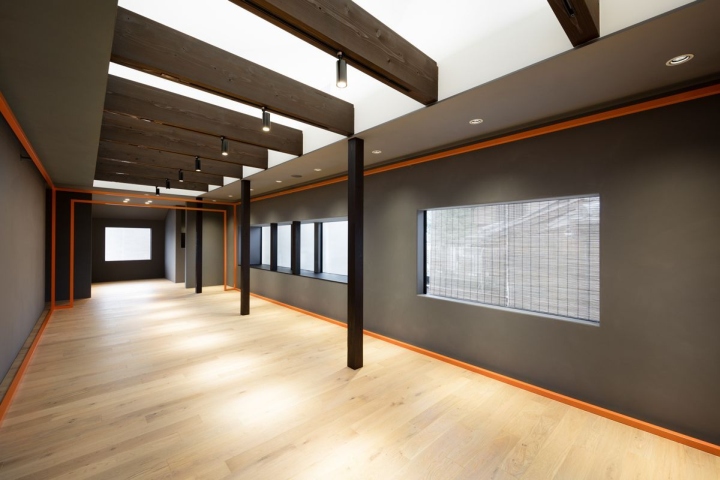
Since the < Hermès Gion-mise> is a temporal store for a limited period, we proposed the design using “kigumi” technique, so that the furniture and fixture can be reused at other locations in different forms after this temporal store is closed. The shop, mainly the central area surrounded by the furniture and fixture, is designed as the space to hold various events on a regular basis. For that purpose, one of the surfaces of the sales space is designed as an illuminating surface with a capability to change brightness and colors of the lighting, so that the atmosphere of the space can be created differently depending on the event held in the space.

The 2nd floor to be used as a gallery and a lounge has an open ceiling space along the roof shape, while those tie beams are exposed to the main part of the space. Wiring duct is embedded in the beams from which fixtures can be hung, and this helps the space to be utilized for multiple purposes. Kyoto city, the center of handicraft and performing arts for more than one thousand years, boldly maintains the presence of traditional culture even today. At this site where tradition and innovation coexist, we intended to produce a kind of “stage” to communicate and transmit the voices of various new experiments to the world.
Design: ODS
Photography:Takumi Ota


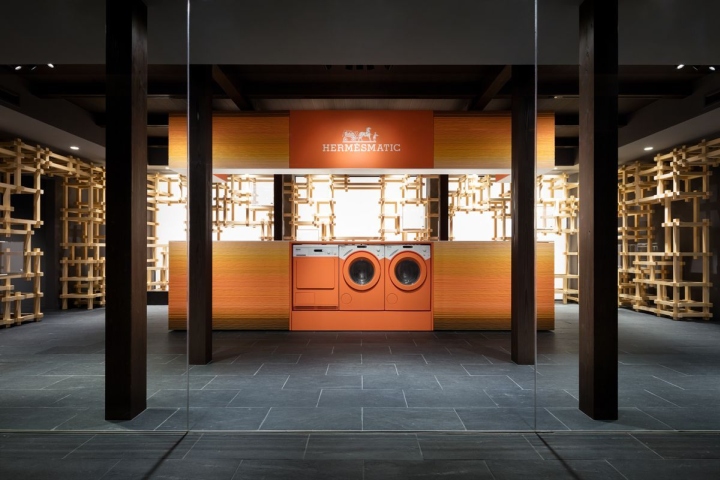
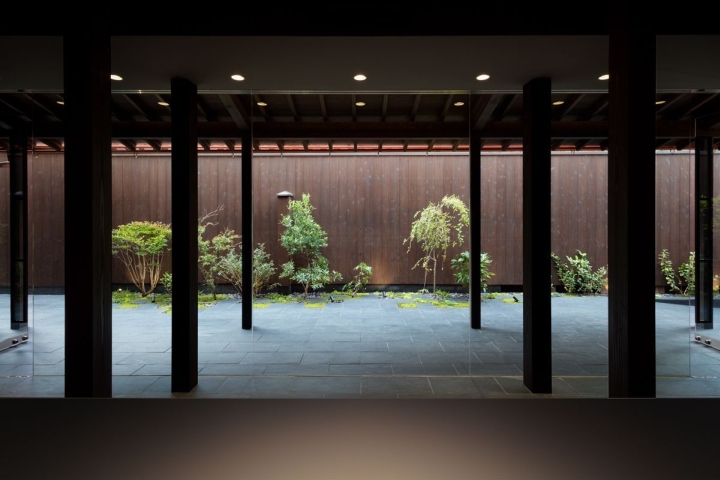


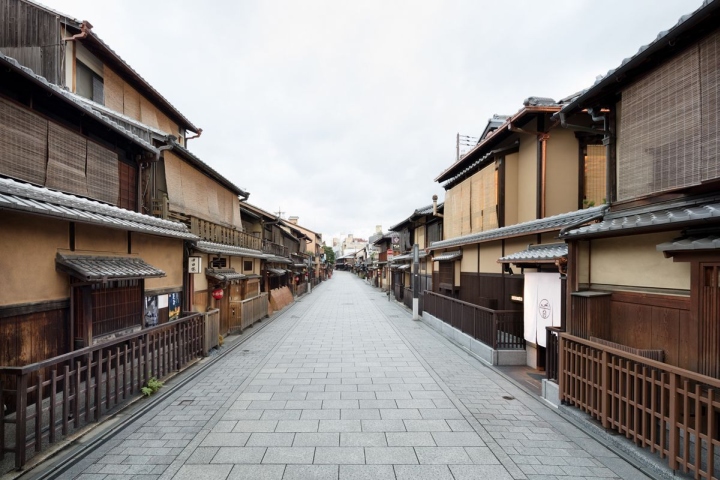
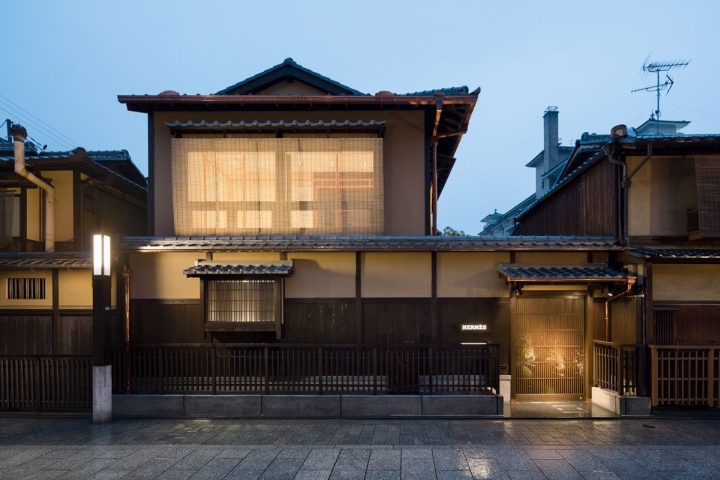
http://www.archdaily.com/803539/hermes-gion-mise-ods















